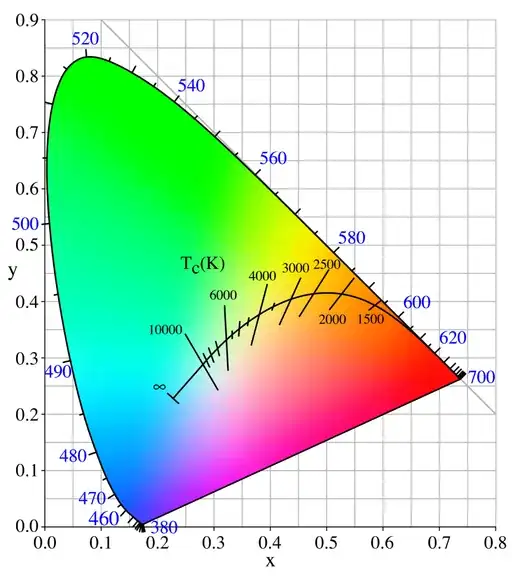With black body radiation, light of different wavelengths are emitted in various proportions depending on the temperature of the emitter.
Graphs of spectral radiance vs wavelength for different colour temperatures look like these:
It is said that the colour of the radiation (as a whole) changes in a predictable manner. Samples of colours at various temperatures:
- 1000K Red
- 1500K Reddish orange
- 2000K Yellowish orange
- 2800K Yellow
- 3500K Yellowish white
- etc
Others claim that the visible light appears yellow at 5000K.
Leaving aside the precise temperature, the consensus is that "[a]s its temperature increases further it becomes bright red, orange, yellow, white, and ultimately blue-white".
However, if we take a look at the graph, it seems that even when the 'yellow' temperature is reached, the black body should emit quite a bit of red and orange wavelengths in addition to yellow.
It might be that the more precise phrasing is that "it first turns red, then orange (red+yellow light), and finally white (red+yellow+blue looks white to the eye)".
But standard high school introductory material and the Wikipedia article seem to suggest that the perceived colour can be a (pure) yellow at some point (2800K in the linked article above or 5000K from the high school material).
Is this just a matter of perception (we see various wavelengths but our brain combines the RGB data from the cones in the eyes into 'yellow'), or is there some other explanation for why we can (in theory) see a pure yellow light emitted from black body radiation of a suitable temperature?
Related questions that do not answer my question:
That question addresses black body radiation generically but not the specific issue of how a 'pure' colour can be perceived when the visible emissions are of a collection of wavelengths (e.g. red + orange + yellow, together perceived as a pure yellow).
That question addresses colour perception through an interplay between emitted and absorbed/reflected light.

